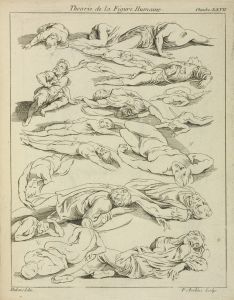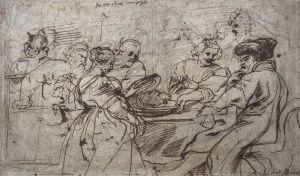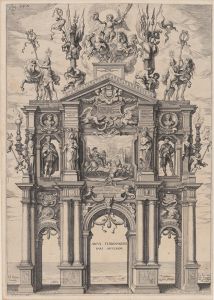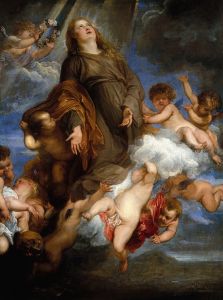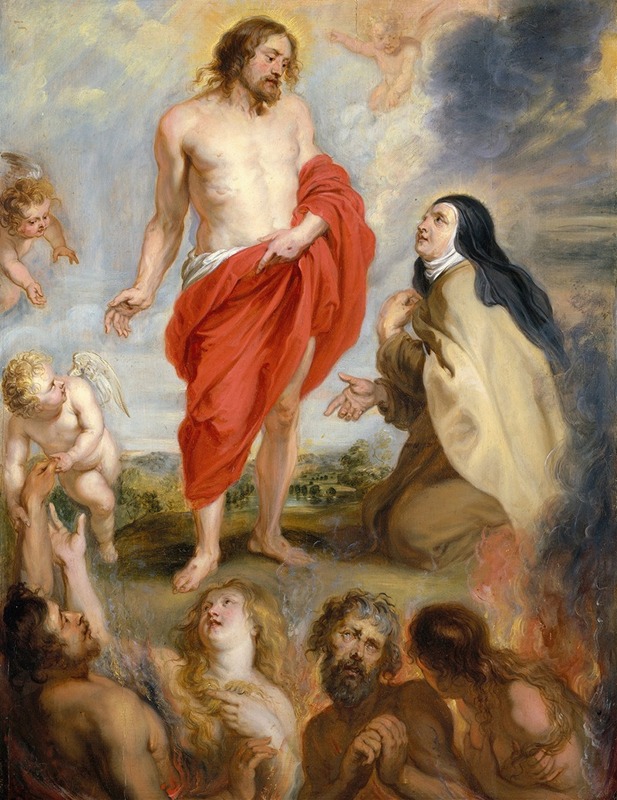
Saint Teresa of Ávila Interceding for Souls in Purgatory
A hand-painted replica of Peter Paul Rubens’s masterpiece Saint Teresa of Ávila Interceding for Souls in Purgatory, meticulously crafted by professional artists to capture the true essence of the original. Each piece is created with museum-quality canvas and rare mineral pigments, carefully painted by experienced artists with delicate brushstrokes and rich, layered colors to perfectly recreate the texture of the original artwork. Unlike machine-printed reproductions, this hand-painted version brings the painting to life, infused with the artist’s emotions and skill in every stroke. Whether for personal collection or home decoration, it instantly elevates the artistic atmosphere of any space.
"Saint Teresa of Ávila Interceding for Souls in Purgatory" is a notable painting by the renowned Flemish Baroque artist Peter Paul Rubens. Created in the early 17th century, this work exemplifies Rubens' mastery in combining religious themes with dynamic composition and vivid emotion, hallmarks of the Baroque style.
The painting depicts Saint Teresa of Ávila, a prominent Spanish mystic and reformer of the Carmelite Order, interceding on behalf of souls in purgatory. Saint Teresa, canonized in 1622, was known for her deep spirituality and mystical experiences, which made her a popular subject in religious art. In Rubens' portrayal, she is shown in a moment of divine intercession, a theme that resonated deeply with the Catholic Counter-Reformation's emphasis on the intercessory power of saints.
Rubens' composition is characterized by its dramatic use of light and shadow, known as chiaroscuro, which enhances the spiritual intensity of the scene. Saint Teresa is typically depicted in a moment of fervent prayer or divine ecstasy, her gaze directed heavenward, symbolizing her connection with the divine. The souls in purgatory are often shown in a state of supplication, reaching out towards the saint, emphasizing their hope for salvation through her intercession.
The painting reflects Rubens' ability to convey complex theological concepts through visual means. His use of color, texture, and form not only captures the emotional depth of the scene but also serves to communicate the Catholic Church's teachings on purgatory and the role of saints. This aligns with the broader artistic and religious context of the time, where art was used as a tool for religious instruction and inspiration.
Rubens was a prolific artist whose works were highly sought after by both religious and secular patrons. His ability to infuse his paintings with both grandeur and intimacy made him one of the leading figures of the Baroque era. "Saint Teresa of Ávila Interceding for Souls in Purgatory" is a testament to his skill in rendering religious subjects with both reverence and vitality.
The painting is part of a larger body of work by Rubens that explores themes of faith, redemption, and divine intervention. His works were instrumental in the visual representation of Catholic doctrine during a period of significant religious upheaval and reform. Through his art, Rubens contributed to the Counter-Reformation's efforts to reaffirm and celebrate Catholic beliefs.
While specific details about the commission and current location of "Saint Teresa of Ávila Interceding for Souls in Purgatory" are not widely documented, Rubens' influence on religious art remains undisputed. His ability to blend theological themes with artistic innovation continues to be studied and admired by art historians and enthusiasts alike.









